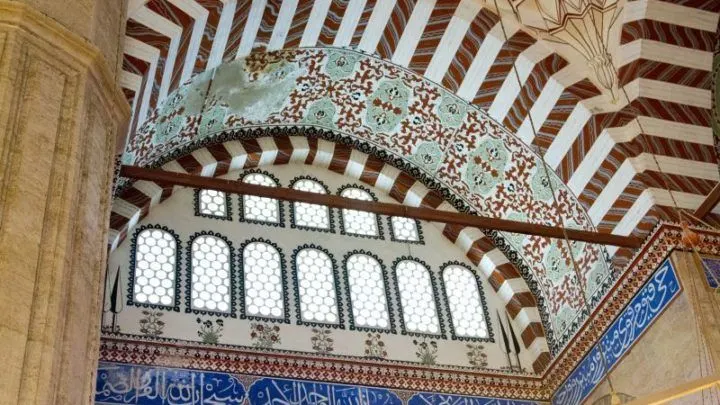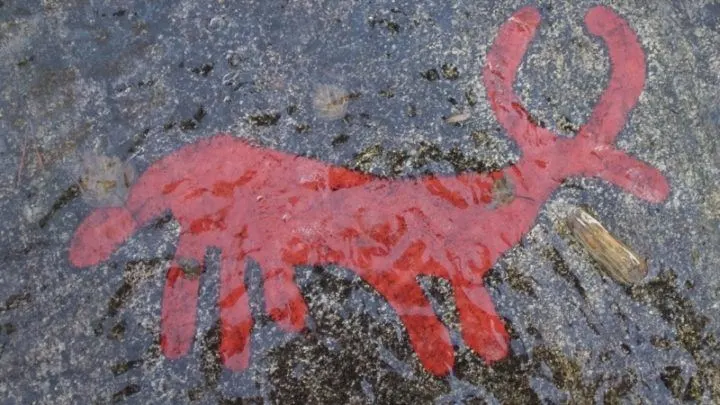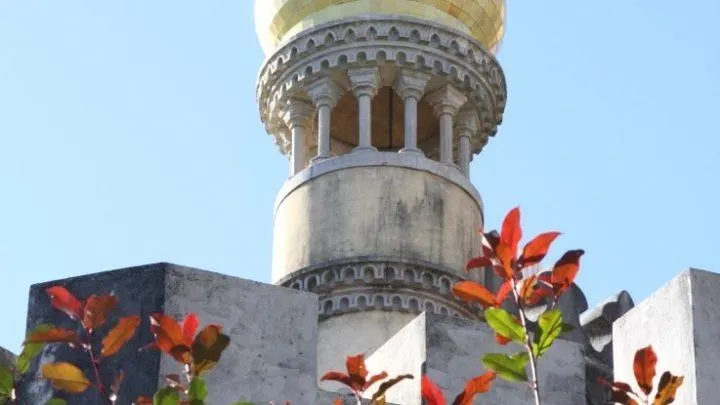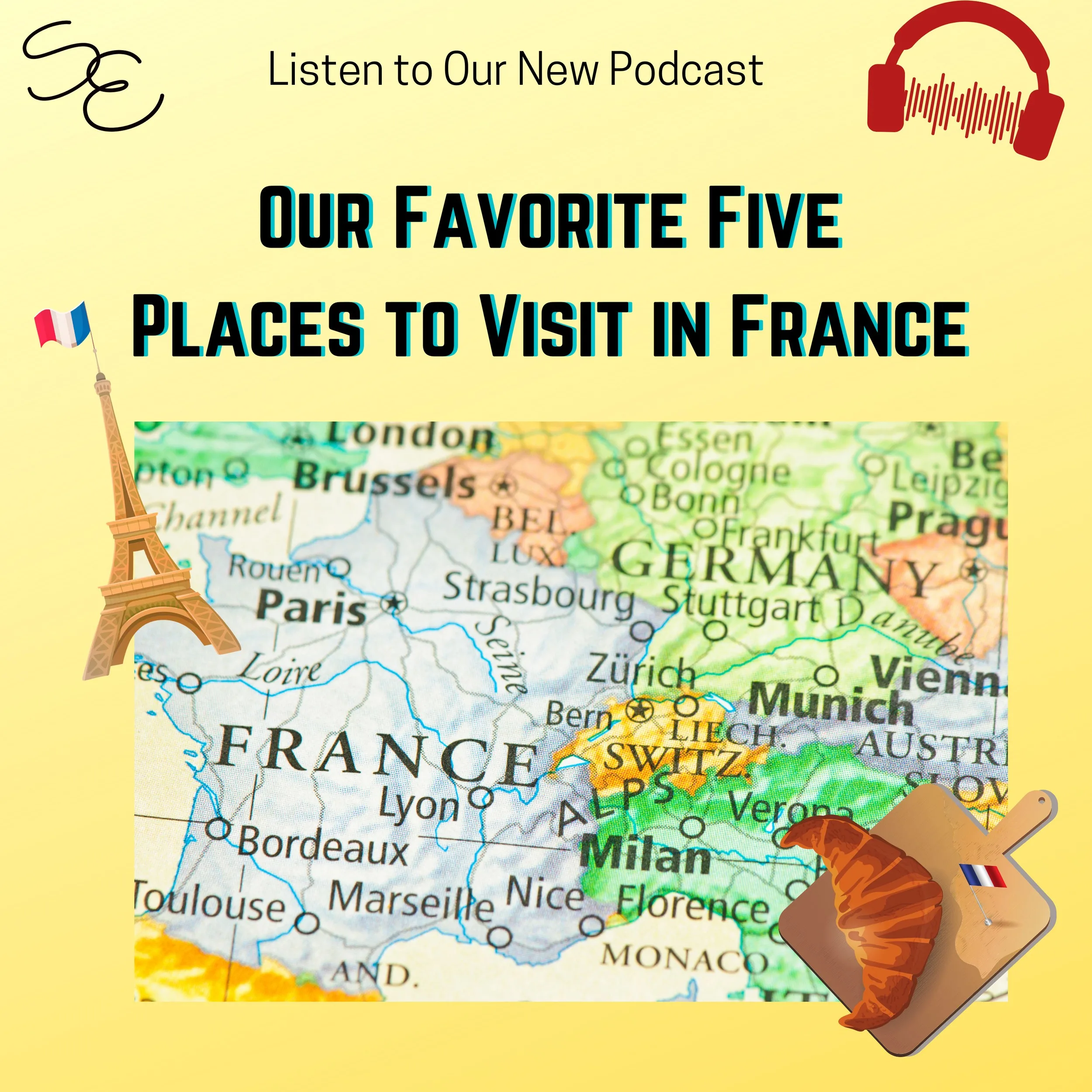Planning a trip to Germany? One thing we always check are the UNESCO world heritage sites, so we have made a list for you to compare them and see which ones you would like to put on your German itinerary.
Germany is one of those countries that we know a lot about. We’ve done tons of traveling there and, in fact, have lived in the country for a total of fifteen years. Of course, when people ask us what to do and where to go, we always like to include the UNESCO World Heritage Sites in the region they’ll be visiting.
Germany has really embraced the UNESCO World Heritage concept, choosing to protect numerous places representing different parts of their cultural history. Architecture, industry, design, engineering…the heritage list covers so much, it would be impossible to visit all of them in one vacation. In fact, we’ve listed the most popular and interesting of the sites, any of which can be included on any itinerary for a richer experience.
We’ve been to many of Germany’s forty-three cultural, and three natural, World Heritage Sites and so, naturally, we have our favorites that we are including here. However, we’ve asked some expert travelers to share their favorites, as well. We’ll update the list with new sites when possible.
Note: We’ve added the UNESCO list number associated with each site if you want to read the formal reason why it has been inscribed as an important global site. To go to it, just type in “https://whc.unesco.org/en/list/#/”.
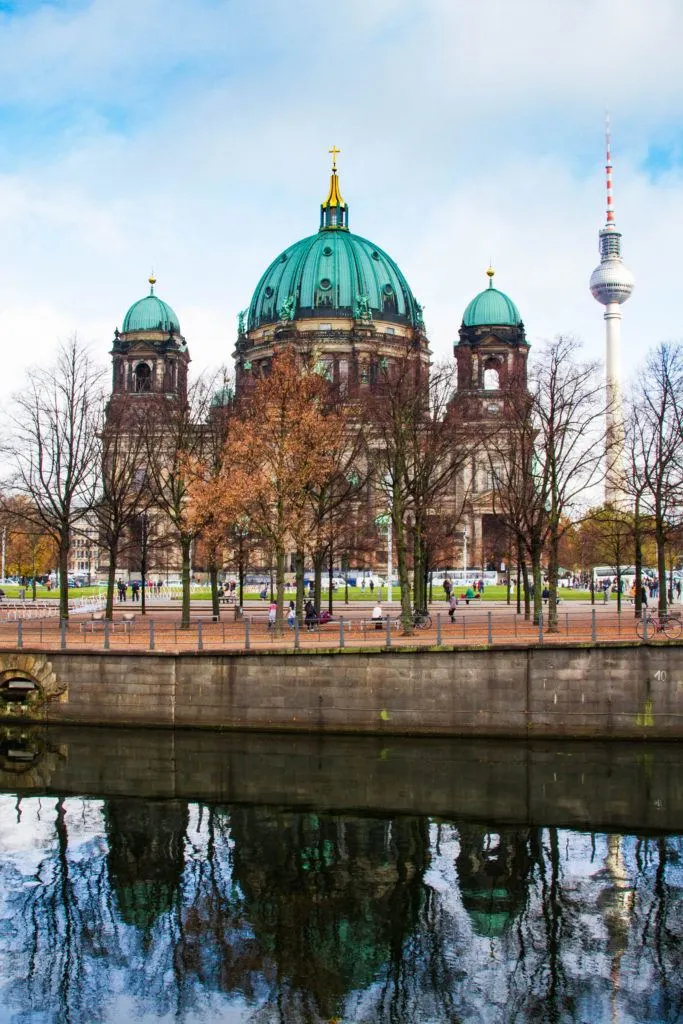
WHS #896 – Museum Insel (Museum Island), Berlin
Museumsinsel is a museum complex on a small island in the river Spree in the middle of Berlin. Seems normal enough, right? Well, what’s unique about these museums is that they were some of the first buildings constructed with the sole purpose of being a museum. Work on the island took place throughout the nineteenth century during a time of Enlightenment in what was then Prussia.
In fact, one of my favorite museums in the world can be found here, the Pergamon Museum. Inside this magnificent building can be found all the wonders of ancient civilizations from Babylon to Egypt, Greece and Rome. There is an entire temple facade reconstructed piece by piece as well as statues, pottery, ancient writing, the list goes on and on.
When you are planning your trip to Berlin, be careful. You don’t want to try and visit all of these museums in one day. Instead, plan on visiting only one a day during your stay. Also, don’t feel like you need to go to each of the museums. However, the Pergamon and the Altes (history) museums really should not be missed.
Where to Stay: Calma Berlin Mitte
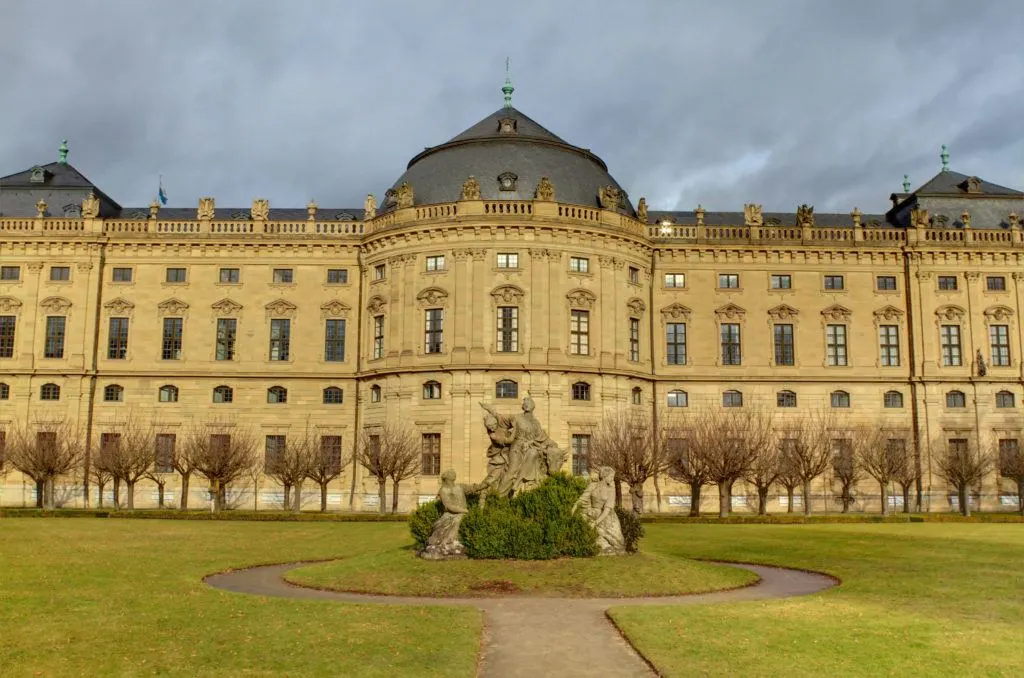
WHS #169 – Wurtzberg Residence With Court Gardens and Residence Square
Located in the northwest corner of Bavaria, Wurzburg Residenz is about an hour and a half east of Frankfurt and three hours north of Munich. It’s easily accessible by car or train and can be done as a day trip from either location or as a two day trip. While Wurzburg does have a gorgeous historic center, with tons to see and do, it’s the palace on the hill that’s inscribed on the World Heritage List.
This magnificent palace was built during the Baroque period, and it has a very colorful history as it was the palace where the Prince-Bishops of Wurzburg lived and ruled. Johann Philipp Franz von Schönborn and his brother Friedrich Carl von Schönborn had the main palace built over a 24 year period, completed in 1774. One of the reasons the Residence is inscribed is the great variety of artwork, frescoes, paintings and sculptures created by artists from all over Europe.
Our favorite fresco covers the massive ceiling of the entrance hall. This incredible painting shows the typical landscape and animals found in the four continents, though it takes some interesting artistic license for the Americas.
Another interesting aspect of the entrance hall is the grand staircase. Nicknamed “Habsburg Steps”, the steps of the staircase are half height, allowing the ladies in their magnificent, and restrictive, long gowns to traverse the steps with style ease.
The gardens are perfect for strolling around and can be visited for free. Near the palace, the gardens continue the formal baroque style, but eventually changes to an English garden with meadows and woods. This is the best place for a long walk on a nice spring day.
A good exploration of the Residence and Gardens will take about three hours. Afterwards, head into the old town and stop in at the Gasthaus Alte Mainmuehle for some local dishes and a glass of wine from the region.
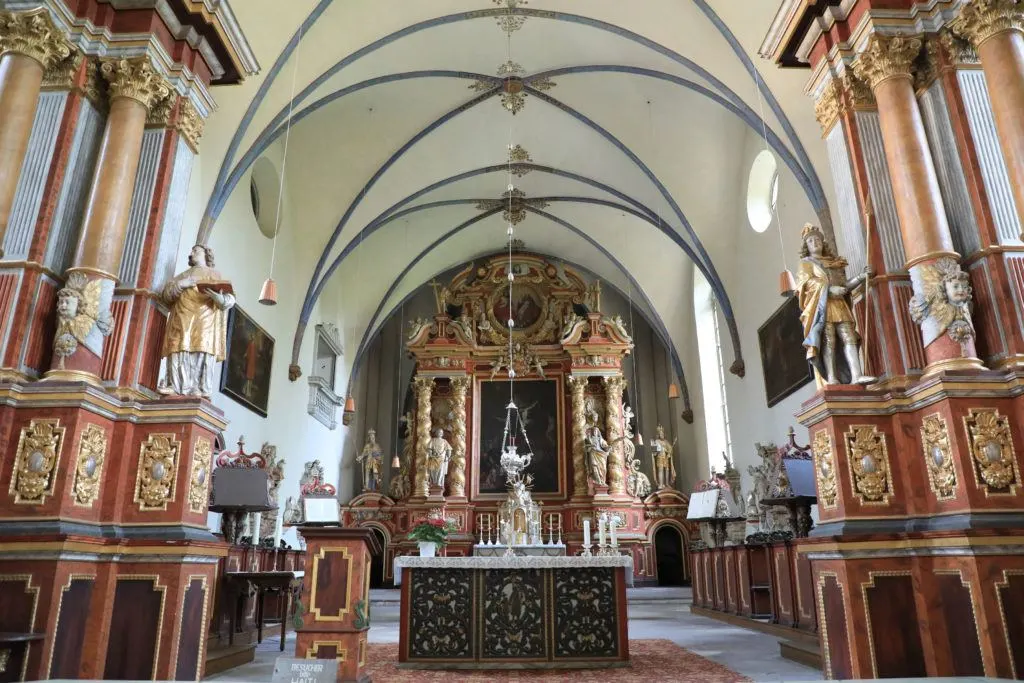
WHS #1447 – Carolingian Westwork and Civitas Corvey
The Carolingian Westwork is located in North Rhine-Westphalia, about three hours north of Frankfurt. Completed in the mid ninth century, the site has the oldest standing structure from the Carolingian empire founded by Charlemagne the Great. The church and monastery here played an important role in bring the Christian doctrine to the wild frontiers of Europe.
We visited this huge complex in the spring, which was a perfect time to visit because there were beautiful wild flowers and new growth on the trees and lawns. The gardens were filled with a brilliant lime green, versus the dark, sort of, moody green that comes later on in the year. It was bright and beautiful, and as you walk through the building itself, there were many mythological frescoes on the walls, unique to this monastery.
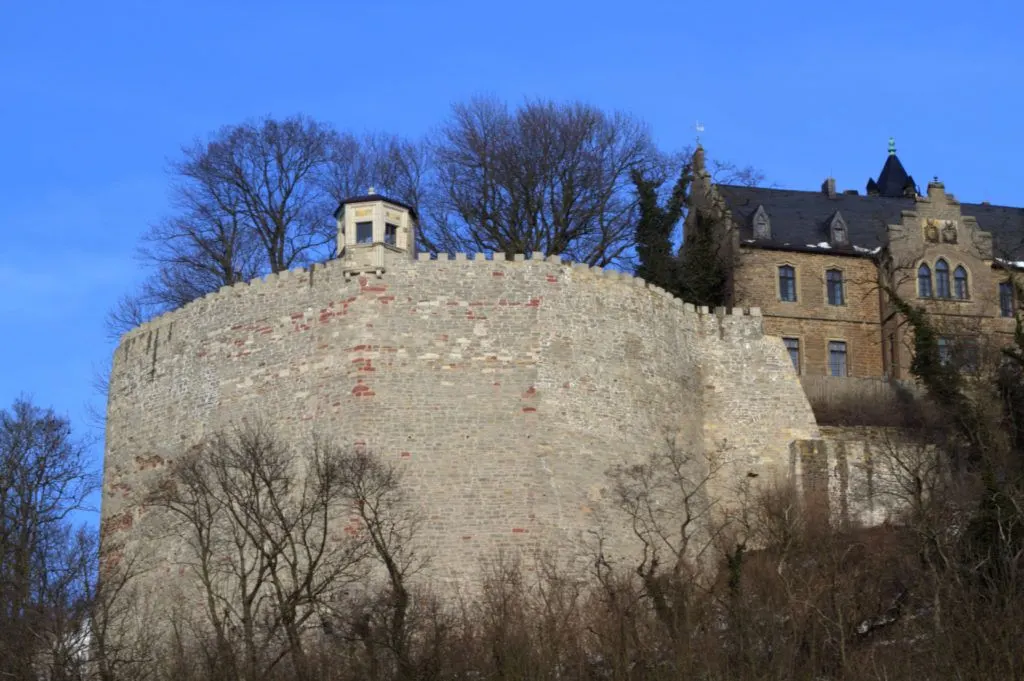
WHS #535 – Collegiate Church, Castle, and Old Town of Quedlinburg
This is a cute little town, and old medieval city is located in the area of Saxon-Anhalt, which used to be in Eastern Germany. Since Germany was reunified in 1990 it’s become cuter and cuter. The town owes its inscription on the World Heritage List, in large part, to the number and quality of half-timbered houses still remaining.
In fact, Quedlinburg has been a center of trade and industry non-stop since medieval times. It is a remarkable example of an old castle town. It started out with a castle, and the castle keep in the area and grew concentrically from there to the service quarters in the field and then the town underneath that was servicing the castle. So it’s a really good example of town planning, and you can still visit the eleventh century church way up on the hill; the town itself is well preserved.
Park on the outskirts of the old town and then walk into the pedestrian zone where you can explore all of the fachwerk, or half-timbered houses, which have been converted into art galleries, shops, and restaurants. Our favorite, however, is the Brauhaus Luedde, where they have a delicious braunbier on tap and some pretty good food as well.
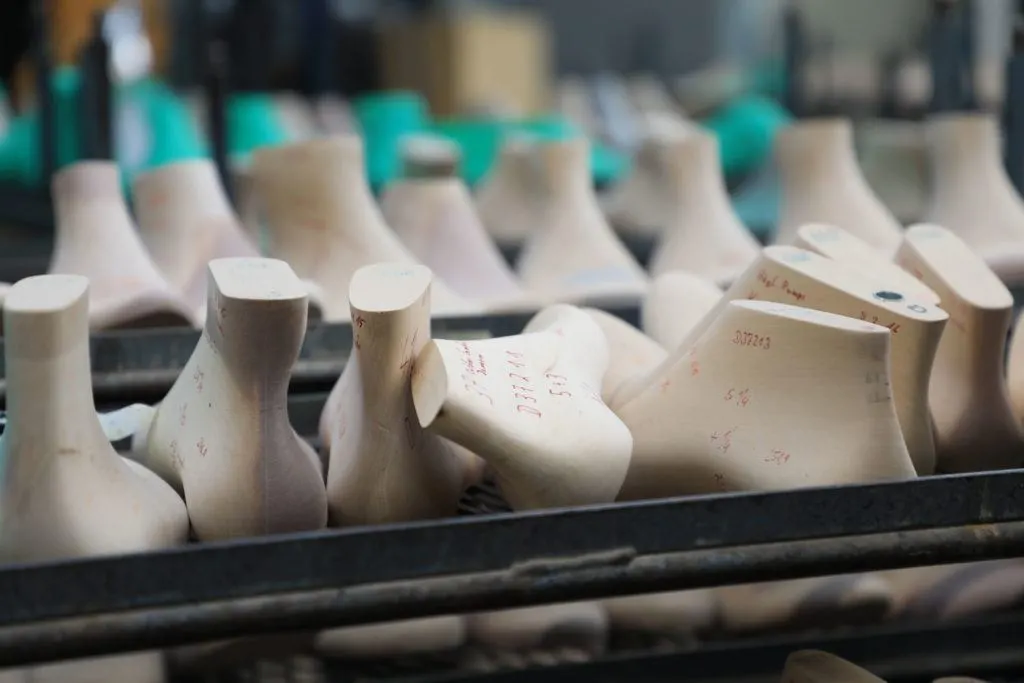
WHS #1368 – Fagus Factory in Alfeld
What is a shoe factory doing on the World Heritage List? Well, when that factory was designed by Bauhaus founders Walter Gropious and Adolph Meyer, and is an outstanding example of Modernist architecture, therefore the answer is clear. This complex of buildings is a landmark of European and North American industrial architecture.
OK, the factory doesn’t actually make shoes, and it never has. Instead it makes the tools used to make shoes, called shoe lasts. These are the molds, shaped like feet, that shoes are constructed around. A tour of the factory is available that takes visitors around the exterior of the main building and into a small section of the factory itself.
On our visit, the factory was closed but they had left one of the doors open into the fabrication area where we could see the layout of the factory floor and where the molds were being constructed.
There was a guard at the door to keep people from wandering in, but he must have been bored because he happily lowered the chain and asked us if we wanted to walk through. Of course we did. He gave us a little private tour and we were able to get a closeup look at the process. I don’t think this happens often, but we were happy to have that little stroke of luck.
Other buildings in the complex hold a UNESCO World Heritage Visitors Center where a series of interactive displays present the World Heritage Sites. There’s also a museum, an art gallery and a small cafe. Altogether, expect to spend about two hours for your visit.
All this traveling in Germany make you hungry? Check out this podcast: German Foods You Must Try.
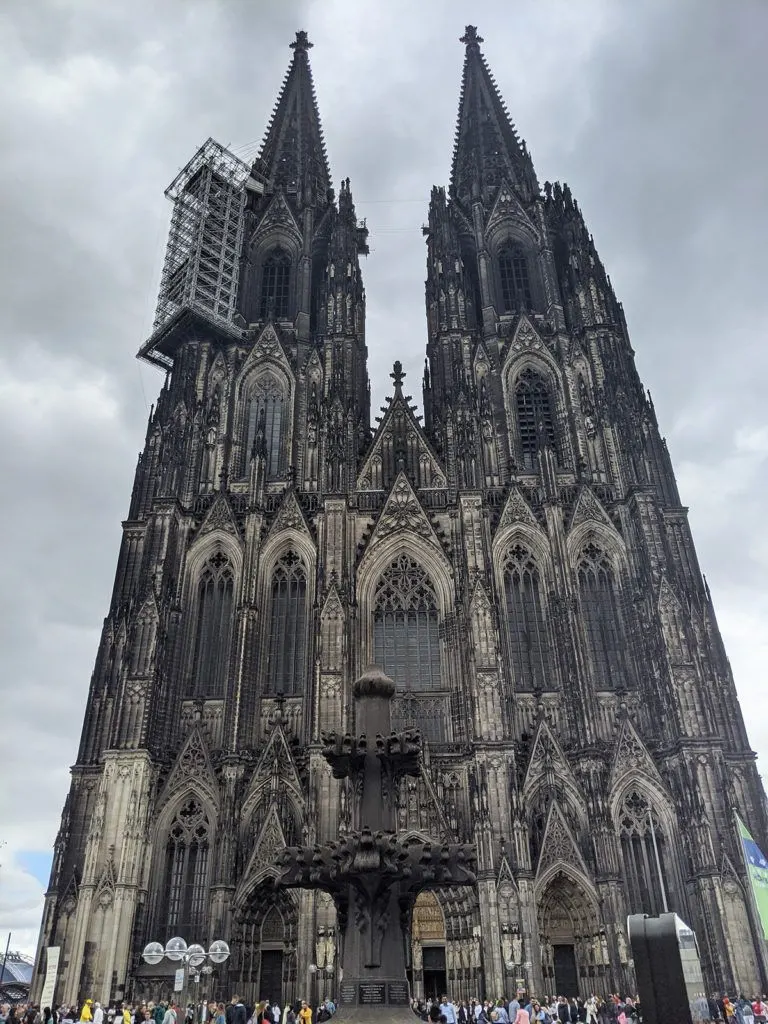
WHS #292 – Cologne Cathedral
Cologne Cathedral is one of the best world heritage sites in Germany, achieving UNESCO status in 1966. The eye-catching twin towers and architecture of Cologne cathedral is truly iconic.
As soon as you arrive in Cologne Old Town, the first thing that you see is the enormity of this beautiful gothic inspired cathedral. Known as Kölner Dom, the construction of the Cologne cathedral dates to 1248, the medieval period. However, after various pauses, it was finally completed in 1880 and even though the medieval period had long since passed, the structure stayed true to the original design. Having survived several bombs during World War II, it is remarkable that this magnificent world heritage site is still standing, let alone so intricately preserved.
If you would like to see the gothic splendour of the inside, you will need to book a tour online, in advance and places are limited. Tours in English are also restricted to weekends, so bear that in mind. One of the best times you can see the Cologne Cathedral is in winter when it is surrounded by beautiful Christmas markets and lights. Perfect if you are travelling with children. However, as the cathedral is centrally located in Cologne Old Town, restaurants, bars, and the Rhine River bridge are also close by and there are many fun things to do within walking distance.
Recommended by Kerry Hanson from VeggTravel
WHS# 1314 – The Wadden Sea
The Wadden Sea spans along the coastlines of Germany, Denmark and the Netherlands. Located within the North Sea, it is the world’s largest intertidal system and because of its rich biodiversity and importance for migratory birds, it was declared a UNESCO World Heritage Site in 2009.
The Wadden Sea is also home to a vast variety of habitats including marshlands, mudflats, tidal channels, salt marshes, sand dunes, sandbars, estuaries and more, making the German Wadden Sea a must-visit, especially if flora, fauna and natural habitat interest you. For birding and wildlife enthusiasts, the Wadden Sea is a whole different world with species like harbor porpoises, harbor seals and grey seals calling it home.
The diverse landscapes and unique flora and fauna of this place also make the Wadden Sea a fantastic place to visit with kids. It’s a whole lot of geography and biology combined together in one fun trip!
Guided mudflat hikes are the most popular way to explore the German Wadden Sea for tourists. But apart from that, one can also visit the vantage point overlooking the Husum Bay, visit the Friedrichskoog Seal Center, or check out the many biking and hiking trails going through the region.
Staying within the Schleswig-Holstein Wadden Sea National Park in camps would be an experience in itself, and common shrimps and common blue mussels are a common delicacy in the region that must be tried out for sure!
Recommended by Lavinia Dsouza of Continent Hop
Make sure to visit Lavinia’s blog.
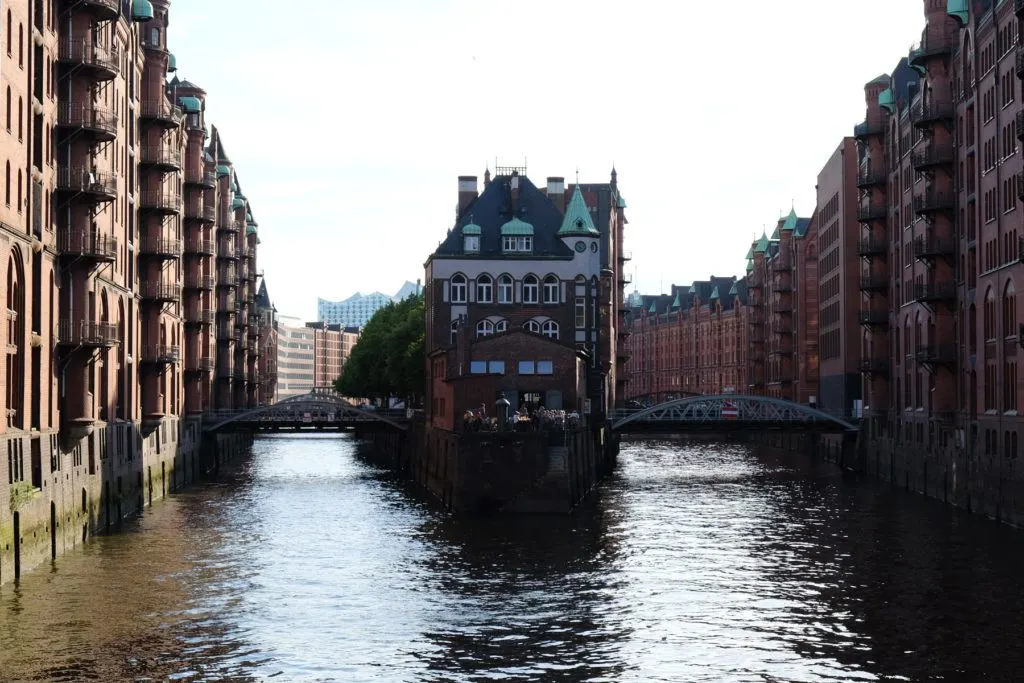
WHS #1467 – Speicherstadt and Kontorhaus District with Chilehaus
Hamburg’s Speicherstadt and Kontorhaus district, along with the landmark Chilehaus were added to the UNESCO World Heritage Site List in 2015.
The Speicherstadt is Hamburg’s historic warehouse district, built between 1885 and 1927. It covers a huge area (300,000 m2) and consists of 15 enormous brick-built warehouses, set among narrow canals. The Speicherstadt is one of Hamburg’s top attractions in its own right, but it’s also home to one of the best things to do in Hamburg; Miniatur Wunderland, an amazing, huge and richly-detailed model railway complete with a miniature airport and a miniature version of the Speicherstadt.
Across the Zollkanal you’ll find the other part of the World Heritage Site, the Kontorhaus district. The buildings in the Kontorhaus district were built between the 1920s and the 1940s and are stunningly modernist. Don’t miss the view of the Chilehaus from the junction of Pumpen and Burchardstraße – it looks just like the bow of an ocean liner. Attractions in the Kontorhaus district include Chocoversum, a chocolate museum where you can discover Hamburg’s connection to the chocolate industry and make your own chocolate bar.
A great hotel near the Speicherstadt and Kontorhaus is the Premier Inn Hamburg Zentrum. It’s right between the two areas, just a few minutes’ walk from both the Chilehaus and the most picturesque view of the Speicherstadt on Poggenmühlen Bridge. There are surprisingly few restaurants in the Speicherstadt, but you’re not too far from the waterside bars and eateries on the historic Deichstraße.
Recommended by Helen of Helen on her Holidays
WHS #430 – Frontiers of the Roman Empire
We’ve written many times about the frontiers of the Roman Empire and how it has really played a big role in our travels. So when we saw a sign for the Roman Limes Museum in Aalen while driving down the A7 we knew we had to go.
The Frontiers of the Roman Empire are a collection of settlements, watchtowers, walls, forts, and other ruins that can be found along the line that represented the furthest reaches of the Roman Empire in Europe. In the United Kingdom, that’s the well known Hadrian’s Wall. However, most people don’t realize that defensive line extended through Germany as well, running from the northwest of the country down to the Danube.
Either site can easily be added to an itinerary when exploring those regions and will take about two to three hours to get the most out of them. Both have activities for children that are sure to keep the little ones happy.
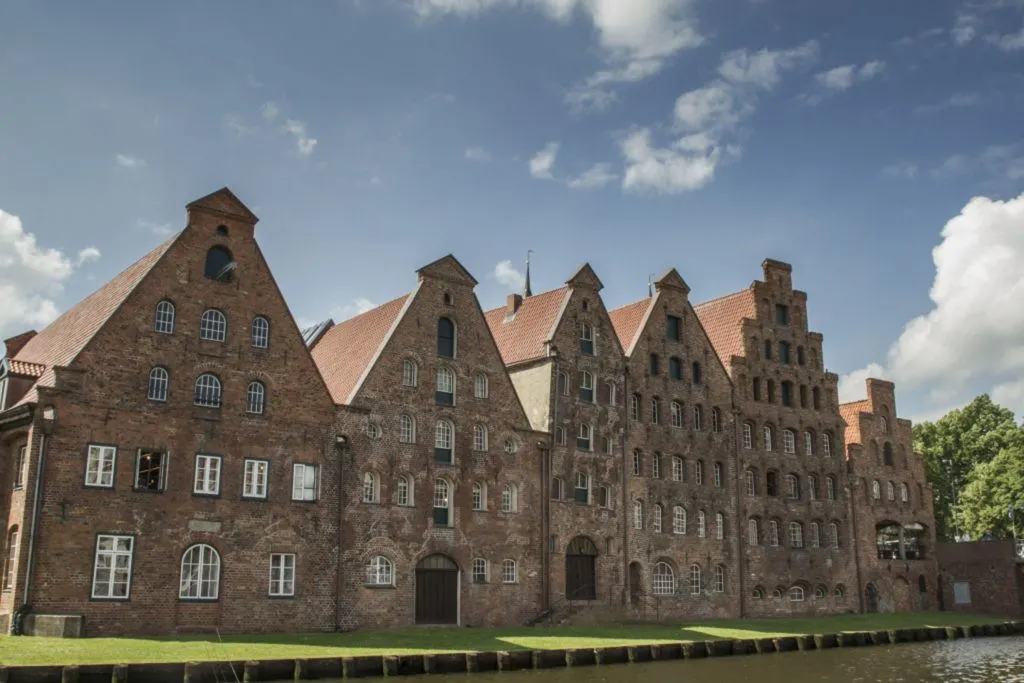
WHS #272 – The Hanseatic City of Luebeck
Another fascinating period of history in Germany was the Hanseatic League era. The league was a trading coalition led by German patricians in cities, towns, and settlements around the Baltic and North Seas. This trade empire lasted from the 13th to the 17th century with more than 200 trade centers throughout the region, but it’s capital was in Luebeck, Germany.
Lubeck is a small city in the north of Germany that still has several important Hanseatic structures. My favorite is the old Salt Store Houses, but the old city gate, the cathedral, and the old Patrician houses are all intriguing as well. The old town is easy to explore on foot as, like most German cities, the area is a pedestrian only zone.
While in Luebeck, visit the European Hansemuseum for an interactive exploration of life during the height of the merchant led league. Afterwards, have lunch or dinner in the restored Hanseatic Guildhall, Schiffergesellschaft.
Luebeck is perfectly situated to use as a base while touring northern Germany or can be a stop on the way to the Scandinavian ferries or cruises leaving out of Travemunde.
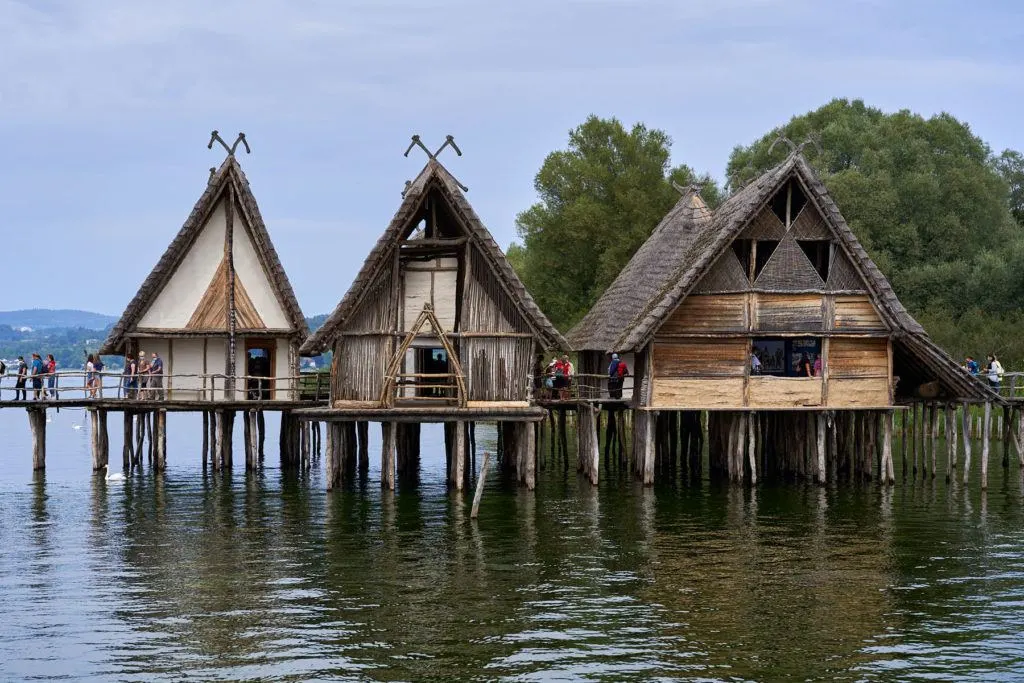
WHS# 1363 – The Prehistoric Pile Dwellings around the Alps
The Prehistoric Pile Dwellings around the Alps include more than 100 places in six countries. If you want to visit this UNESCO World Heritage Site in Germany, the best place to do so is in Unteruhldingen, at Lake Constance.
Archaeologists found remains of stilt houses in 9 different sites around the lake, with the oldest ones almost 6,000 years old. In the museum in Unteruhldingen, you can see artefacts from different time periods and learn how the settlements evolved over the following millennia.
A boardwalk takes visitors around reconstructions of the pile dwellings. Inside the houses, you can learn more about the daily life of people thousands of years ago. Children also have the chance to participate in workshops where they can experience how civilizations evolved from the Stone Age until today.
The best way to visit is to include Lake Constance in a road trip through Germany, so you can visit other sites like Neuschwanstein Castle and the German Alps. At the lake itself, make sure to also stop by one of the numerous beaches and go for a swim.
If you want to try traditional food from the area, head to the restaurant Häfeli. Here, you can eat Dinnele, a dish similar to pizza, topped with fresh fish from Lake Constance.
The best place to stay nearby is Hotel Seevilla. From this family-run hotel, it’s only a five-minute walk to the shore of the lake, and you can easily reach the Pile Dwellings, too.
Recommended by Daniel and Ilona from Top Travel Sights.
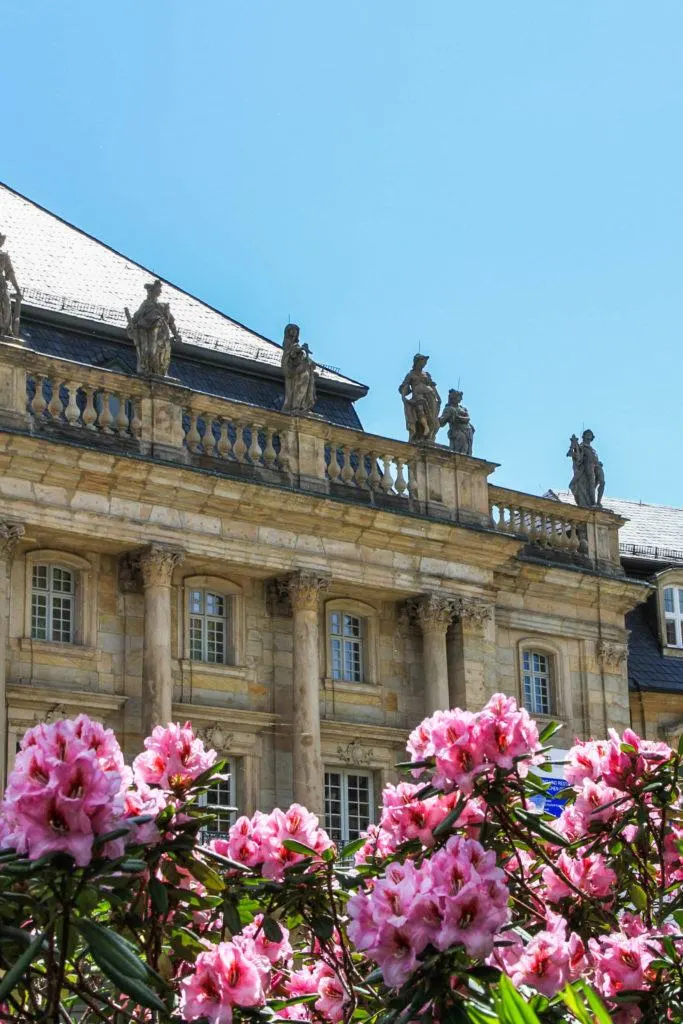
WHS #1379 – Margravial Opera House Bayreuth
Built between 1745 and 1750 for the Royal Margrave family, this is the only remaining Baroque Opera House where you can still watch performances in the original surroundings. The theater has preserved and painstakingly renovated the entire theater in as exact detail as possible.
In fact, the theater was closed for several years for renovations. We were able to take a tour of the facility during that time and it was fascinating to see the incredibly delicate restoration work going on throughout the ornately decorated theater. This is truly a masterpiece of Baroque opulence and style.
For the best experience, try to get reservations for a performance, but if nothing else, take the guided tour. It is well worth it.
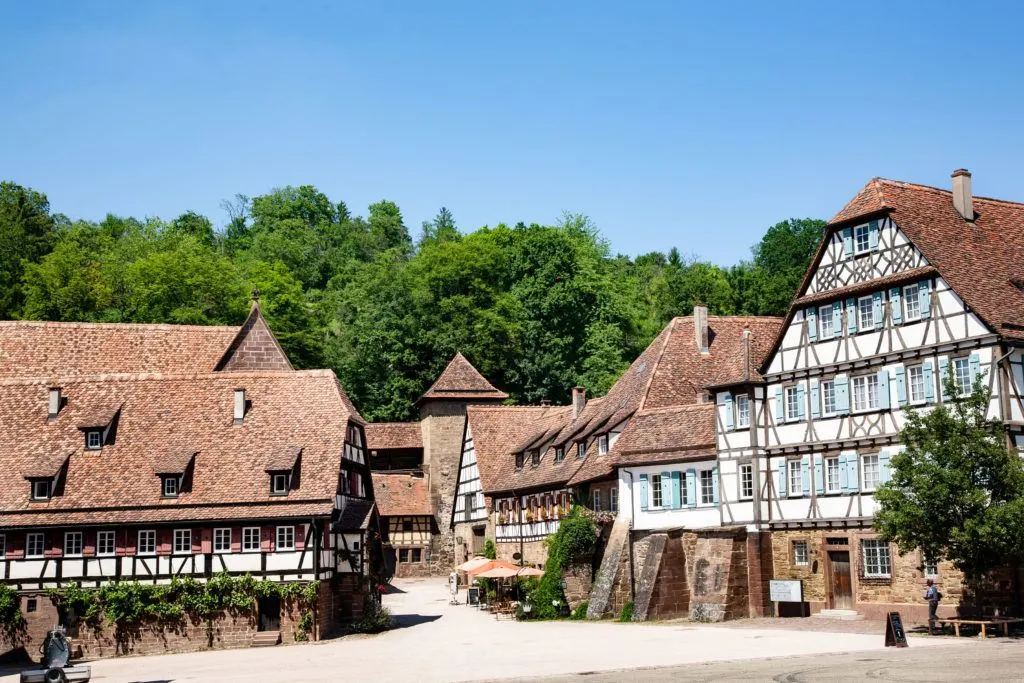
WHS #546 – Maulbronn Monastery Complex
The Maulbronn Monastery Complex, in the state of Baden-Wurttemberg is the best preserved Cistercian monastery outside of Italy. This massive complex, almost like a small city, was constructed in the late 12th century through the 16th century. It’s fortified walls were designed to keep marauders out which they obviously did.
There is a small museum, the beautiful gothic chapel, and a central square with a few small restaurants. There are some impressive half-timbered buildings and the whole area is just very very quiet, even during the highest of tourist seasons.
Maulbronn is a great place to go for an hour or two where you can just quietly explore the monastery grounds, then have a snack or an ice cream in one of the cafes before heading back out on the road. In fact, it’s the perfect stop when you’re heading from Stuttgart to Heidelberg.
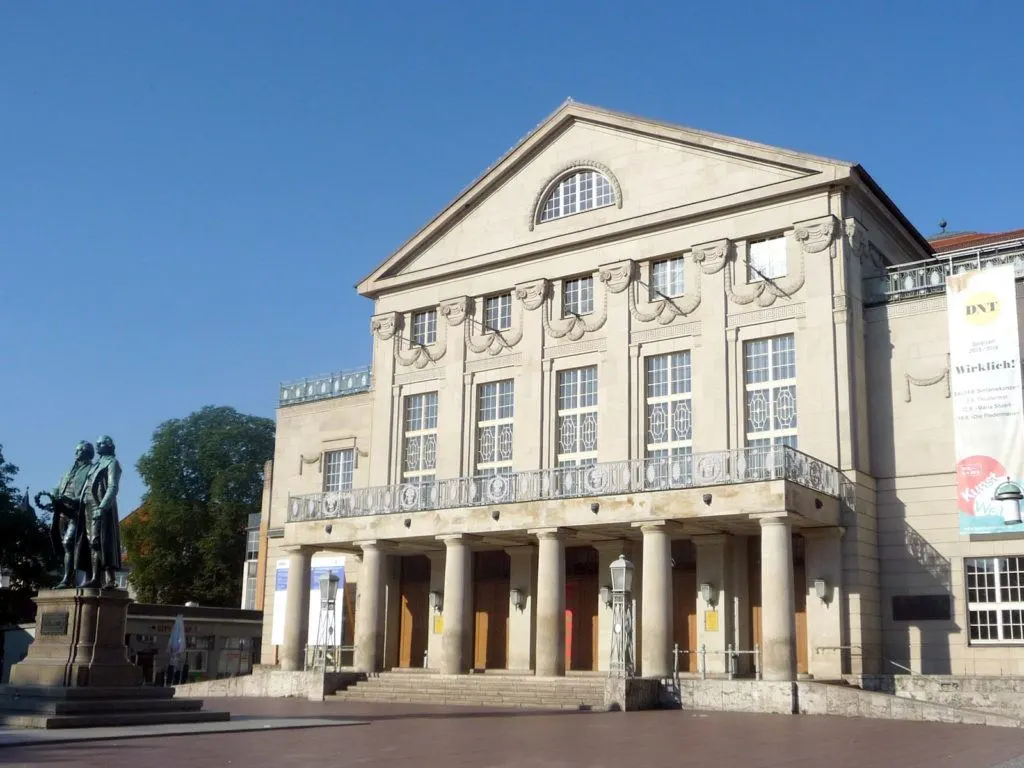
WHS #846 – Classical Weimar
The main cultural heritage consists of the ‘Weimar Classicism’ locations. This was a period at the end of the 18th century and the beginning of the 19th century when arts and culture flourished in Weimar, led by the Duchess Anna Amalia.
Famous writers, such as Goethe and Schiller, moved to the town under her patronage and many new works were introduced there during this period. The World Heritage listing covers 12 locations in the city, including the former homes of the writers, parks, palaces and churches.
Those looking for other sights in the area may also want to visit elements of the second UNESCO listing in the town: the Bauhaus movement, which revolutionised design in the period between the two world wars. The current Bauhaus university in the town is the main element here.
Those who are interested in German literature may want to stay at the prestigious Hotel Elephant in the market square of Weimar, which was once the haunt of Goethe and Schiller, or at least raise a glass to them in the Restaurant AnnA. The hotel has been remodelled since the days of the literary greats but still retains elements of its Bauhaus and Art Deco past.
Recommended by Steve Rout of German Sights
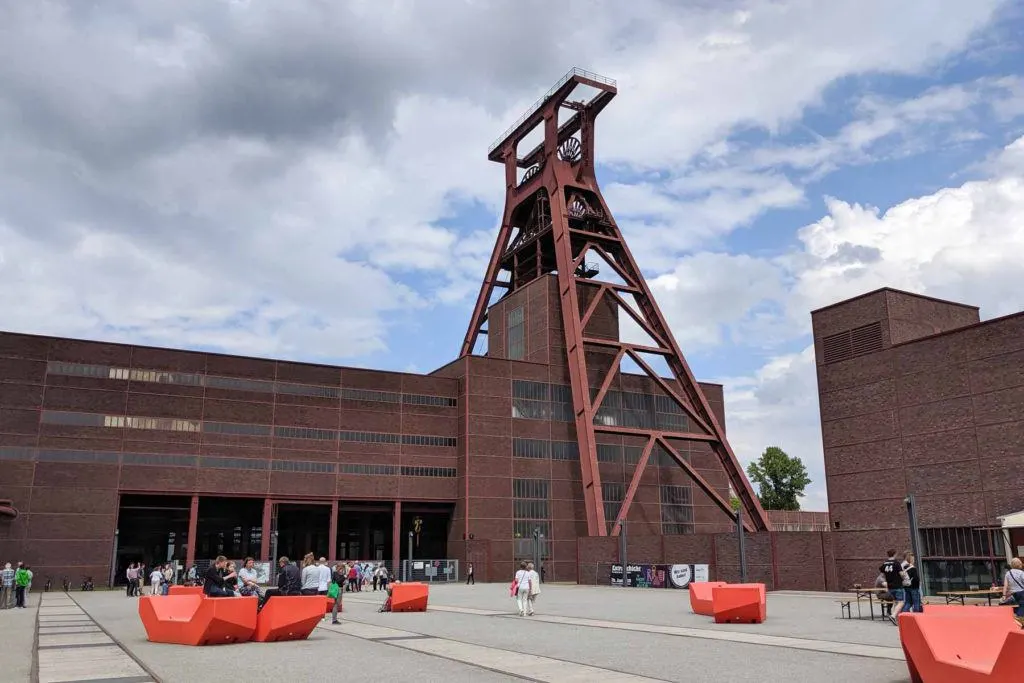
WHS #975 – Zollverein Coal Mine Industrial Complex in Essen
Zeche Zollverein is one of the more unusual UNESCO world heritage sites you can visit in Germany. It’s a coal mine and coking plant, and while it’s not the most aesthetically beautiful German UNESCO site, its history is pretty remarkable.
For more than a hundred years, the coal industry shaped the Ruhr region and turned it into the largest urban area in Germany. Zeche Zollverein was one of the biggest mines, but you’ll come across many more if you spend more time in the area.
Zollverein itself operated from 1851 until 1986. During that time, it employed more than 600,000 people and helped bring wealth to the whole region.
Visiting the grounds of Zeche Zollverein is free, but the best way to learn more about the mine, the coking plant and the whole region is to join a guided tour. It takes you through buildings you otherwise wouldn’t see, and you also get a good impression of working conditions in the mine in the 1800s.
For families, Zollverein offers guided tours specifically designed for children. The whole family can learn more about the mine, play games along the way and find out what it was like to be a miner. Afterwards, you can enjoy lunch in one of the restaurants at Zeche Zollverein.
One of the best hotels nearby is the hotel friends Zeche Zollverein. From here, you can walk to the coal mine in around 15 minutes.
Recommended by Daniel and Ilona from Top Travel Sights.
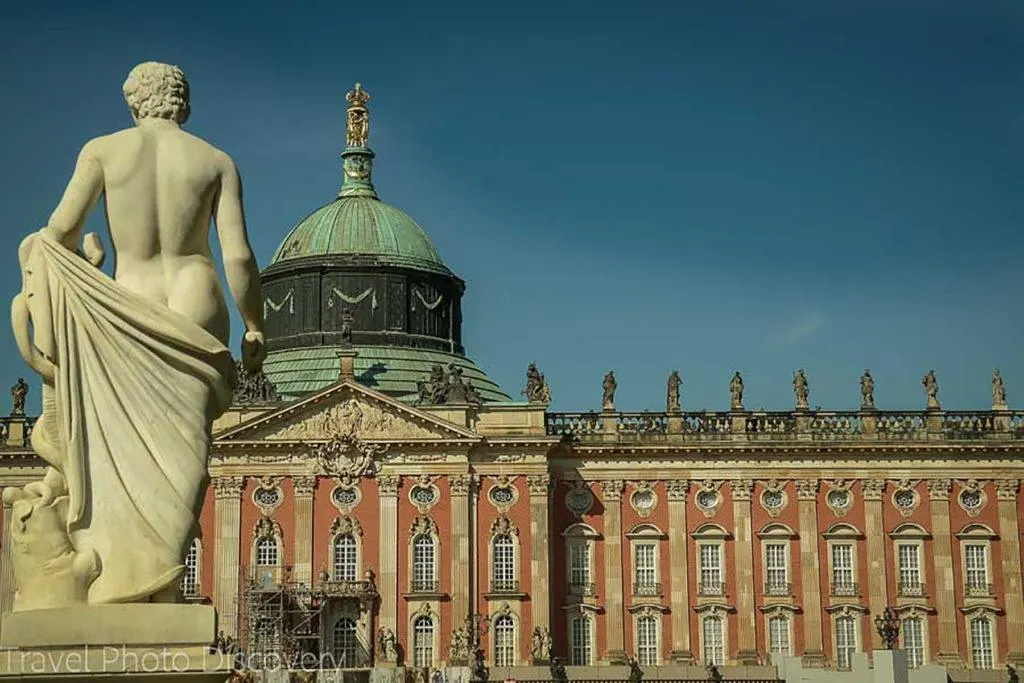
WHS #532 – Palaces and Parks of Potsdam and Berlin
Once the seat of the powerful seat of the Prussian Kings, the palaces of Potsdam showcase the influence, power and excess to the Prussian Kings of its day in Germany. The palaces are worth visiting easy day trip from Berlin by bus, train or even a tour package to the city and major attractions in the area. The city is also worth a wonderful visit with walking promenades, grand buildings and beautiful places to discover. But the palaces of the Prussian kings and their expansive gardens are a highlight to visiting here in Potsdam.
The major palaces at Sansscouci, the Neues Palace or New Palace, the Marble Palace, Orangery Palace and over 16 total palaces in the city boast an area of amazing wealth and prestige that showcases the power of the Prussian kings. Inside, you’ll find ornate gold, silver and other precious ornamentation details, beautiful sculpture and art from impressive collections and paintings of Caravaggio, Van Dyck, Ruebens and other local German artisans and painters of their time.
The entire palaces and garden grounds are designated as a Unesco World Heritage site. You can easily visit each castle by walking or even renting a bike to visit castle to castle and walking through the expansive gardens in between that are wonderful to also explore from the Orangery, the wild natural gardens to the ornate Chinese tea house.
If you are visiting Berin area, make sure to visit Potsdam and the Prussian palaces for a fun day trip exploring these wonderful Unesco Heritage sites and enjoy the city of Potsdam as well.
Recommended by Noel Morata of Travel Photo Discovery
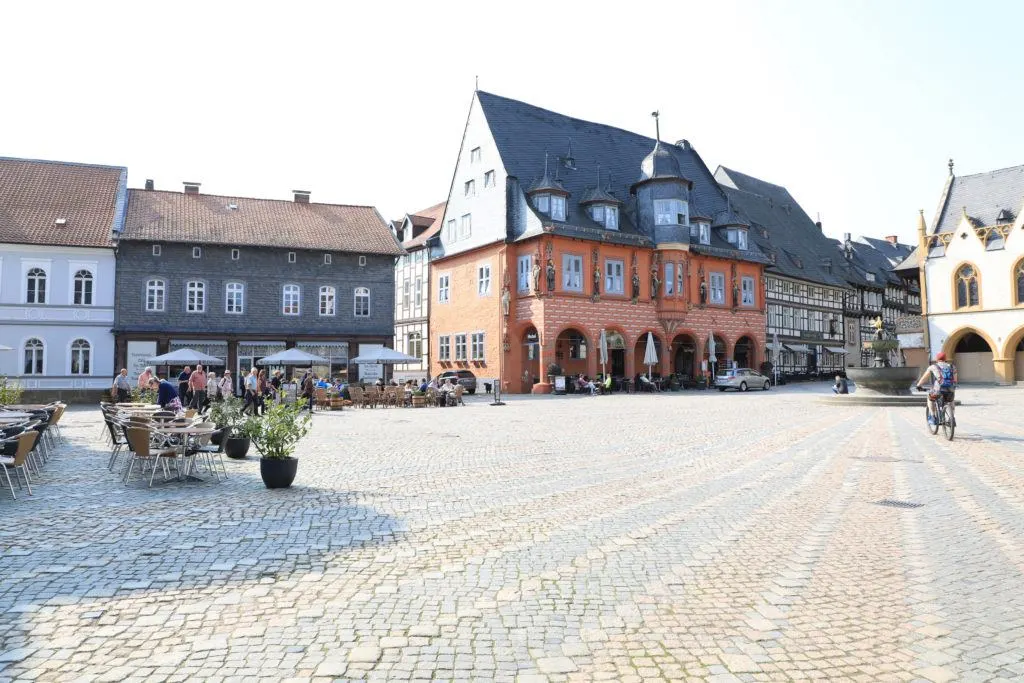
WHS #623 – Mines of Rammelsberg, Historic Town of Goslar, and Upper Harz Water Management System
Rammelsberg mines were inscribed on the World Heritage List as the oldest and longest operating non-ferrous metal mine in Europe. Miners were tunneling into the mountain as early as the 10th century with operations continuing through the 1980s. Today the mines are open for tours into the various galleries using the original elevators and trains.
The town of Goslar developed along with the successful mine becoming a capital of the Holy Roman Empire and later a member of the Hanseatic League. More than 1500 half-timbered houses have been preserved and restored throughout the town, giving it a real fairytale feel. Our favorite part of Goslar are the buildings and houses along the Abzucht, the little stream that winds its way through part of the old town.
For the best experience, plan on spending at least one night in one of Goslar’s splendid boutique hotels in the old town. This will let you explore the alleys and cobbled streets after the day tours have left. Then, the next day can be used for touring the mine.
Conclusion
As you can clearly see, Germany is chock full of amazing UNESCO world heritage sites, some more beautiful than others, some more historical, and some just way cool. We are sure you’ll find some amazing places to visit and add to your Germany itinerary.


